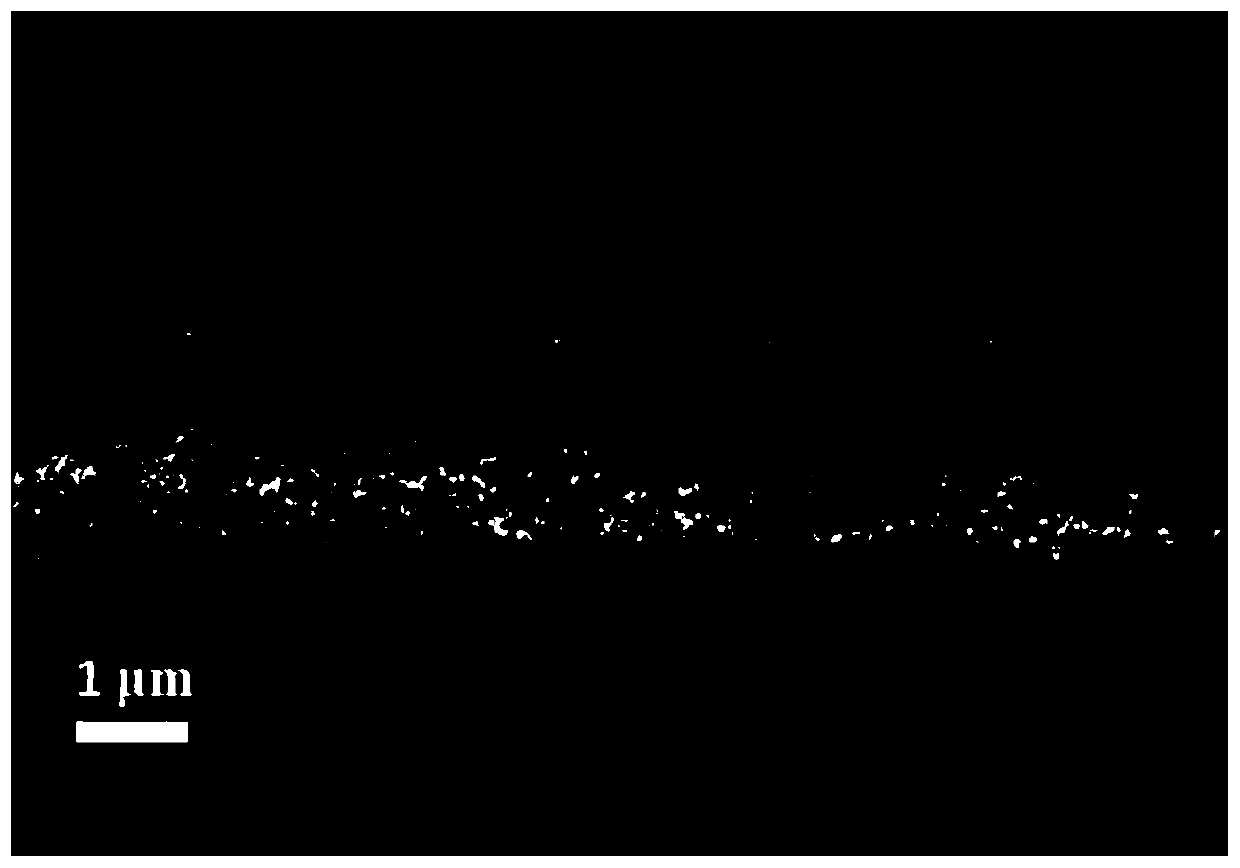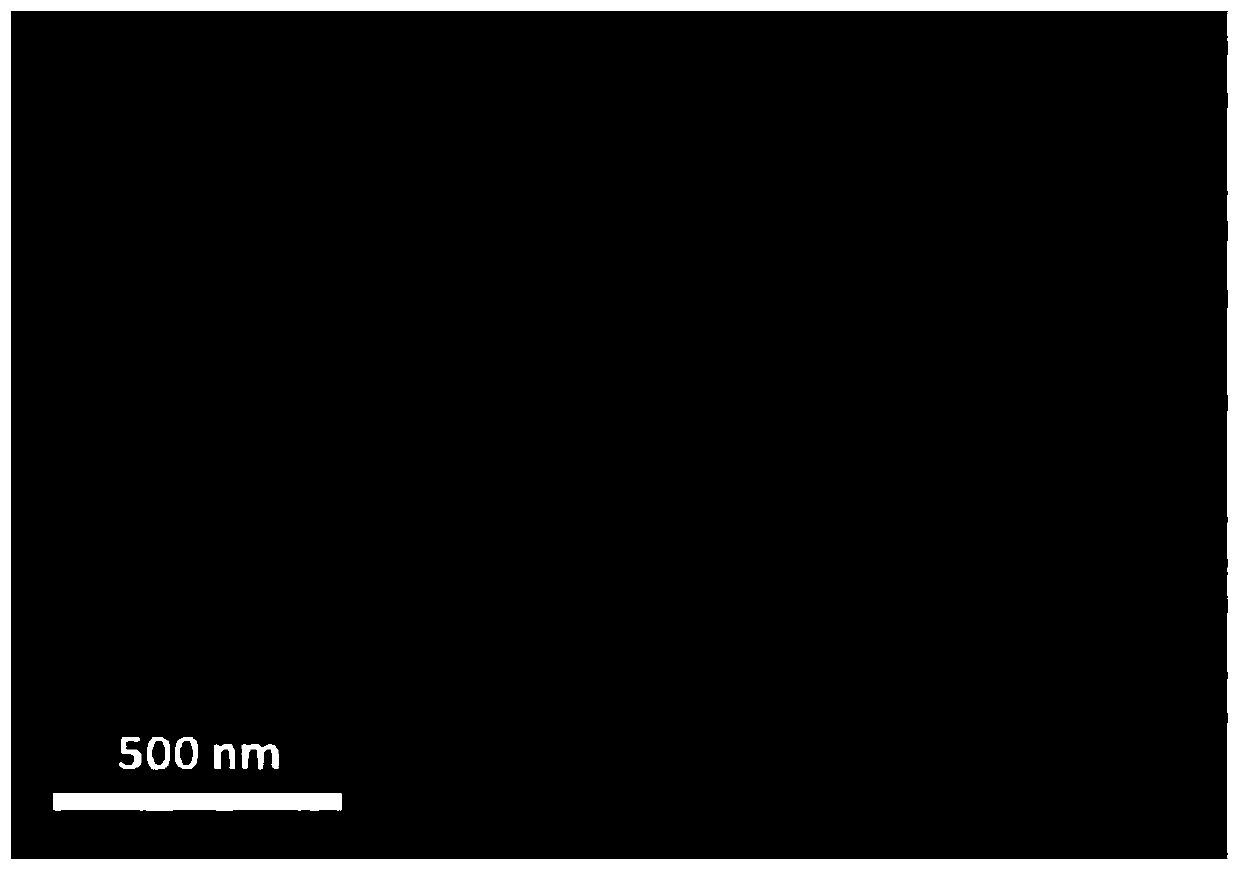All-solid-state solar cell based on synchronous deposition quantum dots and manufacturing method thereof
A technology of solar cells and quantum dots, applied in semiconductor/solid-state device manufacturing, circuits, photovoltaic power generation, etc., can solve the problems of charge recombination and complicated synthesis steps, and achieve the effect of overcoming difficult packaging, simple process and improving charge collection efficiency.
- Summary
- Abstract
- Description
- Claims
- Application Information
AI Technical Summary
Problems solved by technology
Method used
Image
Examples
Embodiment 1
[0035] 1. Cleaning of conductive substrates. The FTO conductive glass was cut to a certain size, and then ultrasonicated for 15 min with detergent, deionized water, acetone, ethanol, and isopropanol in sequence. After cleaning, blow dry the glass with an air gun, further treat it with an ultraviolet ozone cleaning machine for 15 minutes, and store it for later use.
[0036] 2. TiO 2 Preparation of dense layers. The dense layer precursor solution is 0.2M bis(acetylacetonyl)diisopropyl titanate dissolved in n-butanol, mixed and stirred for 30min, and further filtered with a nylon filter to prepare the solution for use. Put the FTO substrate cleaned in step 1 into the glue machine, use a pipette to suck a certain amount of dense layer precursor solution and drop it on the substrate, spin at 500rpm for 5s and 2000rpm for 30s in turn, and then spin The substrate was placed on a heating table, heat-treated at 135° C. for 10 min, and further put into a muffle furnace for sintering...
Embodiment 2
[0045] 1. Cleaning of conductive substrates. The FTO conductive glass was cut to a certain size, and then ultrasonicated for 15 min with detergent, deionized water, acetone, ethanol, and isopropanol in sequence. After cleaning, blow dry the glass with an air gun, further treat it with an ultraviolet ozone cleaning machine for 15 minutes, and store it for later use.
[0046] 2. TiO 2 Preparation of dense layers. The dense layer precursor solution is prepared by dissolving 0.2M bis(acetylacetonyl)diisopropyl titanate in n-butanol, mixing and stirring for 30min, and further filtering the solution with a nylon filter for use. Put the FTO substrate cleaned in step 1 into the glue machine, use a pipette to suck a certain amount of dense layer precursor solution and drop it on the substrate, spin at 500rpm for 5s and 2000rpm for 30s in turn, and then spin The substrate was placed on a heating table, heat-treated at 135° C. for 10 min, and further put into a muffle furnace for sint...
Embodiment 3
[0055] 1. Cleaning of conductive substrates. The FTO conductive glass was cut to a certain size, and then ultrasonicated for 15 min with detergent, deionized water, acetone, ethanol, and isopropanol in sequence. After cleaning, blow dry the glass with an air gun, further treat it with an ultraviolet ozone cleaning machine for 15 minutes, and store it for later use.
[0056] 2. Preparation of dense layer. TiO 2 , ZnO, SnO 2 As a dense layer, the precursor solutions of the dense layer are 0.2M bis(acetylacetonyl) diisopropyl titanate solution, the solvent is n-butanol; the zinc source is 0.8M zinc nitrate solution, the solvent is ethanolamine and 2-methyl methacrylate Oxyethanol mixed solution (volume ratio 1:20); the tin source is 0.1M tin chloride solution, and the solvent is ethanol. Put the FTO substrate cleaned in step 1 into the glue machine, use a pipette to suck a certain amount of dense layer precursor solution and drop it on the substrate, spin at 500rpm for 5s and...
PUM
 Login to View More
Login to View More Abstract
Description
Claims
Application Information
 Login to View More
Login to View More - R&D
- Intellectual Property
- Life Sciences
- Materials
- Tech Scout
- Unparalleled Data Quality
- Higher Quality Content
- 60% Fewer Hallucinations
Browse by: Latest US Patents, China's latest patents, Technical Efficacy Thesaurus, Application Domain, Technology Topic, Popular Technical Reports.
© 2025 PatSnap. All rights reserved.Legal|Privacy policy|Modern Slavery Act Transparency Statement|Sitemap|About US| Contact US: help@patsnap.com



